Editor's note: This is the third in a series of stories about the Joint Readiness Training Center. This series explores the people and organizations behind the scenes of a unit rotation at the center. The first stories explored roleplayers and firemarkers. Watch for more stories in this ongoing series in future issues of the "Guardian."
FORT POLK, La. - Not many things can scare American Soldiers, but one thing keeps them tense during a rotation at the Joint Readiness Training Center: The expectation of an encounter with the opposing force, Fort Polk's 1st Battalion (Airborne), 509th Infantry Regiment.
Prior to deployment, units from throughout the Army (and those from other government and military service branches) participate in a rotation, a series of immersive training exercises conducted at the JRTC over the course of several days or weeks. JRTC offers realistic, scenario-based training that can include roleplayers, pyrotechnics, close air support, permanently-placed mock villages and homesteads, medical evacuations and more. Lanes are set up for live fires, situational exercises, convoy operations and any other scenarios as requested by the rotational unit.
The 1-509th, known by its regimental moniker, "Geronimo," works in coordination with JRTC's Operations Group and disrupts rotational training unit operations by acting as the opposing force, or OPFOR. The Geronimos pattern their tactics, techniques and procedures after those being used by the Taliban and al Qaeda in Iraq and Afghanistan to prepare the rotational units for what they will face when they deploy.
"What we do is important for JRTC," said Sgt. 1st Class Kyle Beyer, B Company, 1-509th. "We train Soldiers for a real war. It's frustrating for them sometimes and they get mad, but we're testing their systems -- giving them a gut-check on their security. If we find a hole in their security, we exploit it."
Disruption is the name of the game for the OPFOR. The 1-509th does everything it can to disturb rotational unit operations through outright combat and more oblique insurgent techniques like using bribes and bringing supplies to the local population. "When the RTU is trying to connect with the populace we try to disrupt it as much as we can because that works against our agenda," Beyer said. "We also work in information operations to distort their messages."
The OPFOR distributes propaganda and places spies in villages, found throughout the JRTC training area, to find out what the population thinks about the Americans. "We gather most of our own intel," Beyer said. "We cache our weapons and go into town to gather information. It's amazing what we pick up just by listening. Yesterday I was playing the role of unauthorized media and got within three feet of a battalion commander."
Sometimes the Geronimos are more successful at garnering support among the local population than the RTU. "There have been times when we were able to get hired as the personal security for the mayor of a village," Beyer said.
The OPFOR enjoys the flexibility of insurgent tactics in battle, too. "We get to do things that no other unit in the Army does," Beyer explained. "We can grow beards and attack as a mob. Sometimes it's the most fun you can have in the Army. When my Soldiers get to attack a forward operating base, they enjoy it because all of the flexibility is on their side, and the RTU has a set way they have to respond."
Sgt. Charlie Person, D Troop, 1-509th, was part of an OPFOR attack on a forward operating base May 21 during the rotation for 4th Brigade Combat Team, 101st Airborne Division, from Fort Campbell, Ky. "I like seeing the battle through the enemy's eyes -- how they maneuver, how they work," Person said. "When I transfer to another unit, I'll be able to give my input on what the enemy might do. We learn something each time we come out here -- every day is a learning experience."
"I knew this FOB was a soft target," said 1st Lt. Robert Smith, B Co, who planned and led the attack. " I reconned today and saw they only had two guards at the gate and the gunner in the truck at the gate wasn't paying attention." Despite a glitch in Smith's plan, his element was able to cause a great deal of disruption to the RTU. "The mortars we had planned didn't come in when we expected them, but we inflicted 40-50 casualties," Smith said. "That's a good day for 10 guys."
Smith said he has gained knowledge from his work at 1-509th. "I've learned a lot of small unit tactics," he said. "We typically move in four- or five-man teams and we know the box like no one else does -- it's easy for us to move around. I've seen units pick up on what we're doing and adapt -- that forces us to change our methods. Other units allow us to do the same thing over and over. We'll do that until they pick up on it."
The most dramatic event during each rotation is known as the "dust-one" -- when the OPFOR captures a Soldier from the RTU. "Dust-one is the biggest black eye we can give an RTU," said Beyer. "Every unit that comes here gets it." The OPFOR is required to move the captured Soldier around the training area and a series of control measures imposed by Ops Group ensure the operation is safe. When the Geronimos capture a Soldier they attach a tracking device to him, which is monitored by the Joint Operations Center. "This scenario gives the RTU a chance to use their intel to find the Soldier, and the mission is minutely controlled -- we keep someone with the Soldier at all times."
"I think that it prevents a lot of real-world dust-one situations," said Staff Sgt. Christopher Garrigus, B Co. "The RTU sees their mistakes -- whether it was a lack of security or accountability. No one is immune from the dust-one -- everyone is in play. Sometimes we capture a sergeant major or battalion commander. Those are memorable moments."
For all the chaos the Geronimos cause, it would seem they have no limitations, but their actions are closely governed by the JRTC exercise rules of engagement. "If we are within five meters of an RTU Soldier we have to point our weapons at the ground, fire and yell 'close kill,'" said Beyer. "We're not allowed to cross the border into 'Pakistan' -- we have to stay in the training area. We are only allowed to conduct a dust-one when it's been authorized. We have to stay with our improvised explosive devices and not get caught while we're placing them."
The 1-509th also has to maintain its proficiency at regular infantry tasks. The balancing act of updating tactics to reflect the reality in Afghanistan and Iraq and staying effective as U.S. Army Soldiers keeps the battalion busy. "It takes some discipline to do both roles," said Garrigus. "We wear a lot of different hats here and have to be proficient at what we do. Our main goal is to train Soldiers, but we also have to stay trained ourselves."
"Our battalion and Ops Group try to stay up-to-date on all the latest (tactics, techniques and procedures) the Taliban and insurgents in Iraq have come up with," said Beyer. "Our staff officers and leaders attend conferences to receive updates on TTPs and we also get updates from the Center for Army Lessons Learned."
As the modern battlefield changes, the opposing forces at JRTC work to reflect the dangers posed by the enemy. "Units come here and we stick it to them for days on end," said Garrigus. "Some units know what to expect -- each rotation is a little better -- they learn from other units. This means we always have to step up our game. When they know what to expect we have to find new ways to exploit their weaknesses."
One thing is sure: This is one opposing force that continues to challenge the U.S. Army.
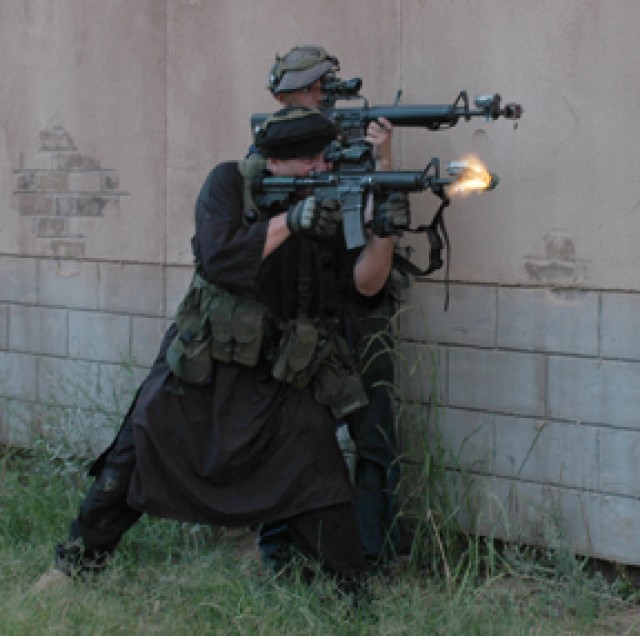
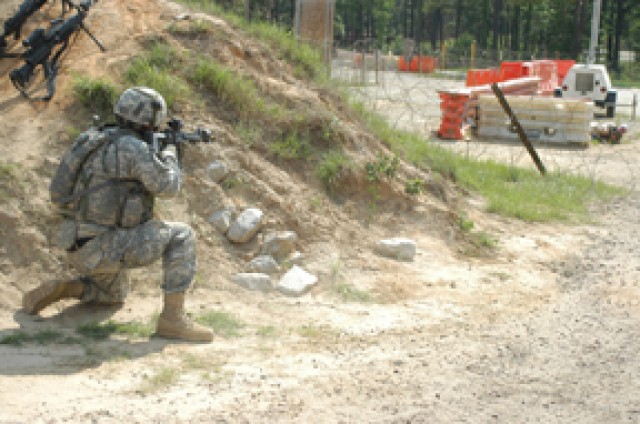
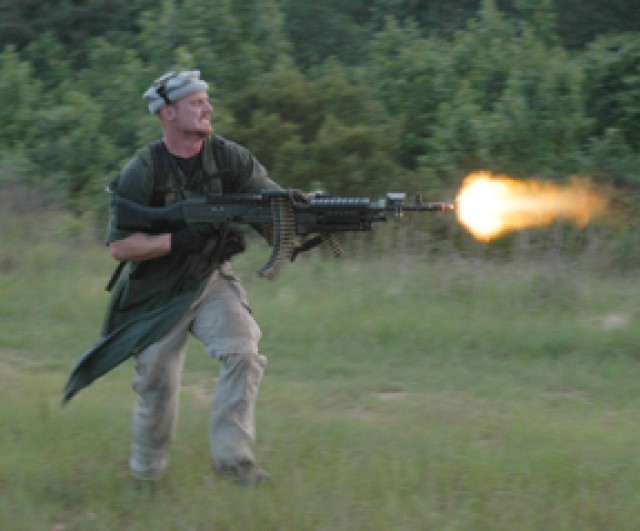
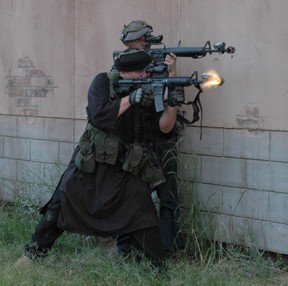

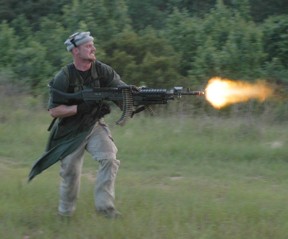
Social Sharing